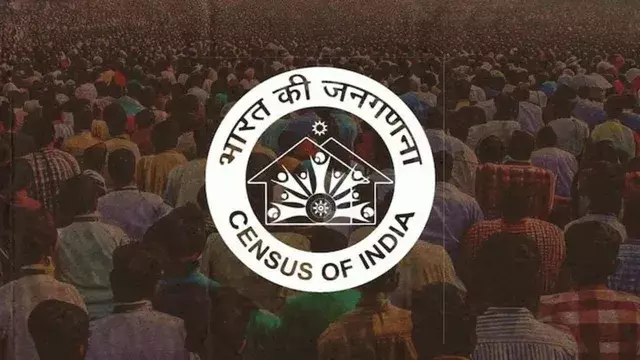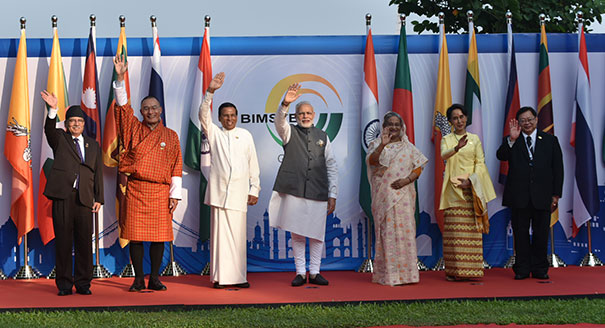- Courses
- GS Full Course 1 Year
- GS Full Course 2 Year
- GS Full Course 3 Year
- GS Full Course Till Selection
- Answer Alpha: Mains 2025 Mentorship
- MEP (Mains Enrichment Programme) Data, Facts
- Essay Target – 150+ Marks
- Online Program
- GS Recorded Course
- Polity
- Geography
- Economy
- Ancient, Medieval and Art & Culture AMAC
- Modern India, Post Independence & World History
- Environment
- Governance
- Science & Technology
- International Relations and Internal Security
- Disaster Management
- Ethics
- NCERT Current Affairs
- Indian Society and Social Issue
- NCERT- Science and Technology
- NCERT - Geography
- NCERT - Ancient History
- NCERT- World History
- NCERT Modern History
- CSAT
- 5 LAYERED ARJUNA Mentorship
- Public Administration Optional
- ABOUT US
- OUR TOPPERS
- TEST SERIES
- FREE STUDY MATERIAL
- VIDEOS
- CONTACT US
Panchayat Devolution Index-2024
Panchayat Devolution Index-2024

Introduction
The Panchayati Raj system, institutionalized through the 73rd Constitutional Amendment Act of 1992, serves as the cornerstone of decentralized governance in India. Recently, the Ministry of Panchayati Raj (MoPR) released the report “Status of Devolution to Panchayats in States – An Indicative Evidence-Based Ranking 2024.” This report evaluates the extent of devolution to Panchayati Raj Institutions (PRIs) across six key dimensions.
Understanding the Panchayat Devolution Index (PDI)
The Panchayat Devolution Index (PDI) is a quantitative tool developed by the Indian Institute of Public Administration (IIPA) to assess how effectively state governments have devolved functions, finances, and functionaries to PRIs. The index scores states on a scale of 0 to 100 based on six dimensions:
- Framework: Examines constitutional compliance, including regular Panchayat elections (Article 243E) and reservation policies (Article 243D).
- Functions: Assesses the assignment and actual performance of local functions and government schemes.
- Finances: Evaluates the flow of funds, including Finance Commission grants and state-level transfers.
- Functionaries: Compares sanctioned versus actual staffing in Panchayat administration.
- Capacity Building: Focuses on training and institutional development for elected representatives and officials.
- Accountability: Reviews transparency measures, such as social audits and Gram Sabha functioning.
Performance of States:
The 2024 report rankings based on composite PDI scores are as follows:
|
State |
Score |
Key Highlights |
|
Karnataka |
72.23 |
1st overall; Leads in Finances (timely 15th FC grants) & Accountability (Social Audit & Gram Sabha). |
|
Kerala |
70.59 |
2nd overall; 1st in Framework, 2nd in Accountability with strong transparency mechanisms. |
|
Tamil Nadu |
68.38 |
3rd overall; 1st in Functions, 2nd in Capacity Building with strong training initiatives. |
|
Maharashtra |
61.44 |
4th overall; 2nd in Framework, 3rd in Accountability with efficient expenditure utilization. |
|
Uttar Pradesh |
60.07 |
5th overall; Best in Accounting & Audit (under Accountability) and strong in financial management. |
|
Gujarat |
58.26 |
6th overall; 2nd in Finances (prompt fund disbursement) and 2nd in Functionaries. |
|
Bihar |
48.24 |
Moderate scorer with challenges in financial autonomy and capacity building. |
|
Jharkhand |
27.73 |
Among the lowest performers due to staff shortages and weak Accountability. |
|
Puducherry |
16.16 |
Critical gaps across all indicators, reflecting non-operational Panchayats and lack of reforms. |
Panchayat Devolution Index (PDI) - Performance by Category
|
Category |
DI Score Range |
States/UTs |
|
Very High |
> 60 |
Karnataka, Kerala, Maharashtra, Tamil Nadu, and Uttar Pradesh |
|
High |
> 55 & ≤ 60 |
Chhattisgarh, Gujarat, Rajasthan, Telangana, Tripura, and West Bengal |
|
Medium |
> 50 & ≤ 55 |
Andhra Pradesh, Himachal Pradesh, Madhya Pradesh, and Odisha |
|
Low |
> 43.89 & ≤ 50 |
Assam, Bihar, Sikkim, and Uttarakhand |
|
Very Low |
Below 43.89 (National Avg.) |
Andaman & Nicobar Islands, Arunachal Pradesh, Dadra & Nagar Haveli and Daman & Diu, Goa, Haryana, Jammu and Kashmir, Jharkhand, Ladakh, Lakshadweep, Manipur, Puducherry, and Punjab |
Key Highlights of the PDI Report
- Overall Devolution: Increased from 39.9% in 2013-14 to 43.9% in 2021-22 (a 10% relative improvement).
- Functionaries Index: Improved from 39.6% in 2013-14 to 50.9% in 2021-22 (28.5% relative improvement).
- Capacity Building Index:
- Increased from 44.0% in 2013-14 to 54.6% in 2021-22 (24% relative increase).
- Schemes such as Rashtriya Gram Swaraj Abhiyan (RGSA, 2018), played a crucial role in strengthening local governance
- Financial Devolution: Financial devolution improved from a national average of 32.05 in 2013-14 to 37.04 in 2021-22, marking a 5 percentage point increase
- Top Performers: Karnataka, Kerala, and Tamil Nadu have consistently ranked high, attributed to their robust policies promoting financial autonomy and administrative support to PRIs.
- Improved States: Uttar Pradesh and Bihar have shown remarkable progress, indicating successful implementation of devolution strategies.
- Women's Participation: The report highlights an increase in women's representation in Panchayats, with states like Kerala and Maharashtra leading in gender-inclusive governance.
- Some KeyReform initiatives:
|
State |
Reform Initiative |
Impact |
|
Kerala |
People’s Plan Campaign |
Empowered Panchayats to plan and execute developmental projects independently. |
|
Karnataka |
Decentralized Financial Management |
Ensured timely release of 15th Finance Commission funds and strong fiscal autonomy. |
|
Tamil Nadu |
E-Governance in PRIs |
Improved transparency in fund allocation and Gram Sabha monitoring. |
|
Rajasthan |
50% reservation for women |
Increased female participation in decision-making and governance. |
|
Maharashtra |
Gram Panchayat Development Plan (GPDP) |
Strengthened bottom-up planning with local community involvement. |
Concerns in Panchayat Devolution
Despite positive trends, several challenges persist:
- Centralization Tendency: Many states exhibit over-centralization in revenue collection, reducing Panchayat autonomy(E.g.Jharkhand and Bihar rely heavily on state transfers rather than locally generated revenue)
- Uneven Devolution: While Karnataka and Kerala have well-structured devolution, states like Puducherry and Jharkhand exhibit significant gaps, leading to disparities in development outcomes.
- Political Interference: Delays in elections, non-rotation of reserved seats, and undue political pressures affect transparency and accountability. (Uttarakhand and Haryana have faced delays beyond the constitutional mandate)
- Financial Constraints: Many Panchayats face limited financial autonomy, restricting their ability to address local issues effectively.(E.g. Reports suggest that only 60% of the 15th Finance Commission grants were utilized in Bihar and Jharkhand due to bureaucratic delays.)
- Capacity Deficits: A lack of adequate training and capacity-building programs hampers the efficiency of Panchayat members.(Study in Odisha and Madhya Pradesh showed that only 35% of elected Panchayat representatives received governance training.)
- Data Reliability: There is often a gap between official data and ground realities, causing inaccuracies. (report by NITI Aayog (2022) found that 45% of Gram Sabha meetings failed to maintain accurate financial records, impacting transparency.)
- Gender Disparities: While women's participation has increased, challenges such as the 'sarpanch-pati' phenomenon, where male relatives exert undue influence, undermine genuine female leadership.
Measures to Improve Panchayat Empowerment
- Reform in Financial Devolution: Increase the share of own-source revenue (OSR) for Panchayats to at least 30% of their total budget, as opposed to the current 10-15% in most states. States like Kerala and Karnataka have successfully implemented property tax reforms and decentralized financial management, allowing for greater fiscal independence at the Panchayat level.
- Strengthen Legal Frameworks: Revise state Panchayat Acts to enforce strict compliance with constitutional mandates and ensure regular, transparent elections.
- Capacity Building Programs: Regular training sessions focusing on governance, financial management, and leadership skills should be organized for Panchayat members.
- Digital Governance: Expand eGramSwaraj & Panchayat Management Systems.
- Promoting Gender Equality: Initiatives aimed at empowering women leaders and curbing practices that undermine their authority are essential for genuine gender-inclusive governance.(E.g. Jeevika program in Bihar)
- Strengthening Accountability Mechanisms: Implementing robust audit systems and transparent grievance redressal mechanisms can enhance the credibility and efficiency of Panchayats.(Social Audit mechanism)
- Institutional Reforms:
- Standardize the functioning and service conditions of the SEC to minimize political interference and ensure smooth electoral processes.
- Implement a common electoral roll for Panchayat and municipal elections to avoid duplication and confusion
- Establish a Panchayat Devolution Monitoring Body under MoPR.
Conclusion
The Devolution Index is a vital tool for strengthening cooperative federalism and local self-governance, helping states identify gaps and adopt best practices for more empowered Panchayats. It enhances transparency for citizens, provides data-driven insights for elected representatives, and acts as a policy roadmap for government officials. By aligning with Viksit Bharat, the index ensures that “Viksit” and “Sashakt” panchayti- raj organisations become the driving force for inclusive growth and sustainable rural development, transforming governance at the grassroots level.
Panchayati Raj: Constitutional Provisions
|
Provision |
Details |
|
Amendment |
73rd Constitutional Amendment Act, 1992 institutionalized Panchayati Raj. |
|
Structure |
Three-tier system: Gram Panchayat (Village), Panchayat Samiti (Block), Zila Parishad (District). |
|
Elections |
Held every 5 years (Article 243E); conducted by State Election Commissions (Article 243K). |
|
Reservation |
33% reservation for women (Article 243D); 21 states provide 50% reservation (e.g., Bihar, Rajasthan, Madhya Pradesh, Karnataka). |
|
Powers & Functions |
29 subjects under Eleventh Schedule (e.g., agriculture, education, health, sanitation). |
|
Finance |
Panchayats receive funds from taxes, duties, Finance Commission grants, and state transfers (Article 243H). |
|
Gram Sabha |
Assembly of all registered voters (Article 243A), responsible for local governance oversight. |
|
Also Read |
|
| FREE NIOS Books | |




